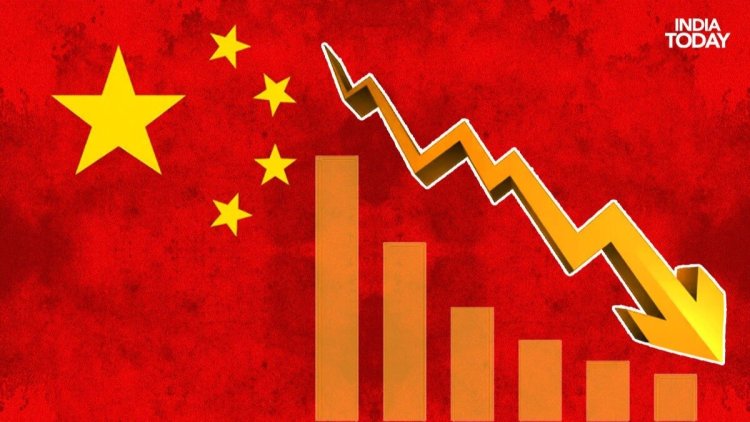How China Became a Manufacturing Powerhouse: A Story of Growth and Challenges
From humble workshop to global factory, uncover the remarkable rise of China as a manufacturing giant. Explore the drivers of its success, the challenges it faces, and its potential impact on the future of global trade.

The rise of China's industrial capital
In 1980, Shenzhen, a tiny fishing village amid an impoverished economy, bore no resemblance to the thriving manufacturing epicenter it embodies today. This transformation is a testament to the extraordinary economic miracle that China has achieved, lifting more than 800 million people out of poverty in just four decades. Yet recent headlines suggest that China's economy is facing obstacles, including a deteriorating real estate situation, weak consumer spending, and slowing credit growth.
The subdued unemployment figures are raising fears about the country's economic prospects. Is China on a downward spiral? How has the country gained so much power in such a short space of time, and what factors are responsible for the ongoing crisis? Could China surpass the United States in its rise to global superpower status? To answer these questions, we must look at China's trajectory and understand the history of its economic development.
The history of China's economic transformation
The timeless story goes that China's rise began when the country abolished communism in 1978, only to suffer a setback by reverting to an authoritarian communist regime. However, this rudimentary explanation ignores other variables. Numerous countries, such as Russia, have also abandoned communist ideology but, unfortunately, have not achieved the same level of prosperity. Even countries that have consistently pursued a more liberal approach, such as India, have not experienced the same meteoric rise as China.
A closer analysis reveals that China's economic miracle is strikingly similar to that of Japan, Korea, and Singapore, although China is not as open compared to these countries. In search of the real story, we turn our attention to distinguished Chinese scholars such as Professor Michael Pettis, Wen, Dr. Yi Wen, and Dr. Zongyuan Zoe Liu, as well as renowned development economists such as the venerable Nobel laureate Simon Kuznets and the erudite Professor Ha Yoon Chang.
The model of investment-led growth
The paradigm of investment-led growth is the key to understanding China's success. This model is characterized by two basic features: a rapid increase in productivity per person and a transition from the predominance of agriculture to the predominance of industry, leading to a shift towards an economy focused on services. To achieve rapid growth, countries should focus on the manufacturing industry, as it offers the opportunity to increase efficiency through automation and facilitates the export of goods.
Using this paradigm, China has undergone a remarkable metamorphosis, evolving from an agrarian civilization to a formidable global manufacturing giant. By strategically investing in infrastructure, building a lean financial system, and securing emerging industries, China has been able to attract foreign capital and increase its economic prosperity.
The three pillars of investment-driven growth
China's investment-led growth model is based on three pillars. The first pillar comprises the provision of resources for infrastructure development. The Chinese government has been responsible for building vital infrastructure, including electricity, water, and transportation networks. These investments were financed through local revenues, which are closely linked to the value of the land and thus guarantee sustainable growth. The second pillar comprises the development of a highly efficient financial system.
Chinese banks lend to productive sectors such as housing and manufacturing while keeping interest rates low to create a climate that encourages entrepreneurial investment. The third pillar involves the protection of emerging sectors. China has introduced tariffs on imported goods and requires foreign companies to enter into cooperative partnerships with their local counterparts. This strategic move aims to facilitate knowledge sharing and promote healthy competition in domestic sectors.
The challenges of China's current model
Although the investment-driven growth model has proven beneficial for China in the early stages, the country is currently facing several formidable obstacles. The focus on investment and exports has led to income inequality and a lack of consumer spending. To achieve sustainable growth, China must shift to a paradigm that prioritizes increasing domestic consumption, thus promoting the successful development of the service sector.
However, the prevailing political circumstances make this transition unlikely. Control of key heavy industries is in the hands of the Communist Party, and any transition to a consumption-oriented model would significantly jeopardize its authority. Consequently, China's current growth trajectory appears unsustainable and could lead to a period of stagnation rather than overtaking the United States as a world power.
The future of China's economy
There are three possible scenarios for China's future. The first perspective is optimistic and assumes that there are ample opportunities for expansion given China's huge population and its potential for increased domestic consumption. However, the political obstacles make this scenario very unlikely. Economists believe the second scenario is more likely, as it predicts a stagnation similar to the lost decades in Japan.
This means that the Chinese economy will continue to struggle, and its growth will not be able to keep up with that of the United States in the foreseeable future. The third scenario envisions an economic downturn comparable to what the United States went through during the Great Depression. However, due to the state-controlled financial system in China, this scenario is less likely.
Conclusion
China's transformation from a humble fishing village to a formidable global manufacturing power is a truly extraordinary story of unprecedented economic growth. Responsible for this success is the investment-based growth model, which places a strong emphasis on creating efficient financial systems, protecting emerging industries, and developing infrastructure.
Nevertheless, China's current problems, such as troubling income inequality, unwillingness to consume, and the uncertainty of its growth model, point to an impending period of stagnation rather than a rise to global superpower status surpassing that of the United States. A deep understanding of China's economic history makes it possible to recognize the intricacies of its expansion and the challenges ahead.
Frequently asked questions
How did China achieve its status as a formidable manufacturing force?
China has emerged as a formidable industrial force thanks to its investment-centered growth paradigm. Through its relentless commitment to developing infrastructure, building efficient financial systems, and protecting emerging industries, China has successfully attracted foreign investment and undergone a remarkable transformation into a major global manufacturing center.
What obstacles does China's economy currently face?
The Chinese economy faces formidable obstacles, such as income inequality, low consumer spending, and an unsustainable growth paradigm. The imperative of sustainable growth requires a shift to domestic consumption and the development of a service-oriented economy. However, political obstacles make this transition even more difficult.
Is it conceivable that China will replace the United States as a superpower?
Given the existing challenges and political factors, it is unlikely that China will overtake the United States as a superpower in the foreseeable future. A period of stagnation will likely follow, similar to the lost decades that Japan experienced.



 admin
admin 










